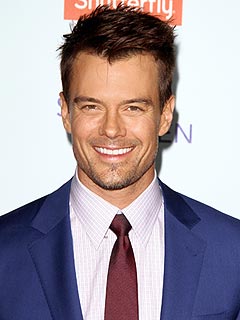ALMATY (Reuters) - Iran was upbeat on Wednesday after talks with world powers about its nuclear work ended with an agreement to meet again, but Western officials said it had yet to take concrete steps to ease their fears about its atomic ambitions.
Rapid progress was unlikely with Iran's presidential election, due in June, raising domestic political tensions, diplomats and analysts had said ahead of the February 26-27 meeting in the Kazakh city of Almaty, the first in eight months.
The United States, China, France, Russia, Britain and Germany offered modest sanctions relief in return for Iran curbing its most sensitive nuclear work but made clear that they expected no immediate breakthrough.
In an attempt to make their proposals more palatable to Iran, the six powers appeared to have softened previous demands somewhat, for example regarding their requirement that the Islamic state ship out its stockpile of higher-grade uranium.
Iran's chief nuclear negotiator Saeed Jalili said the powers had tried to "get closer to our viewpoint", which he said was positive.
In Paris, U.S. Secretary of State John Kerry commented that the talks had been "useful" and that a serious engagement by Iran could lead to a comprehensive deal in a decade-old dispute that has threatened to trigger a new Middle East war.
Iran's foreign minister said in Vienna he was "very confident" an agreement could be reached and Jalili, the chief negotiator, said he believed the Almaty meeting could be a "turning point".
However, one diplomat said Iranian officials at the negotiations appeared to be suggesting that they were opening new avenues, but it was not clear if this was really the case.
Iran expert Dina Esfandiary of the International Institute for Strategic Studies said: "Everyone is saying Iran was more positive and portrayed the talks as a win."
"I reckon the reason for that is that they are saving face internally while buying time with the West until after the elections," she said.
The two sides agreed to hold expert-level talks in Istanbul on March 18 to discuss the powers' proposals, and return to Almaty for political discussions on April 5-6, when Western diplomats made clear they wanted to see a substantive response from Iran.
"Iran knows what it needs to do, the president has made clear his determination to implement his policy that Iran will not have a nuclear weapon," Kerry said.
A senior U.S. official in Almaty said, "What we care about at the end is concrete results."
ISRAELI WARNING
Israel, assumed to be the Middle East's only nuclear-armed power, was watching the talks closely. It has strongly hinted it might attack Iran if diplomacy and sanctions fail to ensure that it cannot build a nuclear weapon. Iran denies any such aim.
Israeli Prime Minister Benjamin Netanyahu said economic sanctions were failing and urged the international community to threaten Iran with military action.
Western officials said the offer presented by the six powers included an easing of a ban on trade in gold and other precious metals, and a relaxation of an import embargo on Iranian petrochemical products. They gave no further details.
In exchange, a senior U.S. official said, Iran would among other things have to suspend uranium enrichment to a fissile concentration of 20 percent at its Fordow underground facility and "constrain the ability to quickly resume operations there".
The official did not describe what was being asked of Iran as a "shutdown" of the plant as Western diplomats had said in previous meetings with Iran last year.
Iran says it has a sovereign right to enrich uranium for peaceful purposes, and wants to fuel nuclear power plants so that it can export more oil.
But 20-percent purity is far higher than that needed for nuclear power, and rings alarm bells abroad because it is only a short technical step away from weapons-grade uranium. Iran says it produces higher-grade uranium to fuel a research reactor.
Iran's growing stockpile of 20-percent-enriched uranium is already more than half-way to a "red line" that Israel has made clear it would consider sufficient for a bomb.
In Vienna on Wednesday, a senior U.N. nuclear agency official told diplomats in a closed-door briefing that Iran was technically ready to sharply increase this higher-grade enrichment, two Western diplomats said.
"Iran can triple 20 percent production in the blink of an eye," one of the diplomats said.
The U.S. official in Almaty said the powers' latest proposal would "significantly restrict the accumulation of near-20-percent enriched uranium in Iran, while enabling the Iranians to produce sufficient fuel" for their Tehran medical reactor.
This appeared to be a softening of a previous demand that Iran ship out its stockpile of higher-grade enriched uranium, which it says it needs to produce medical isotopes.
Iran has often indicated that 20-percent enrichment could be up for negotiation if it received the fuel from abroad instead.
Jalili suggested Iran could discuss the issue, although he appeared to rule out shutting down Fordow. He said the powers had not made that specific demand.
The Iranian rial, which has lost more than half its foreign exchange value in the last year as sanctions bite, rose some 2 percent on Wednesday, currency tracking websites reported.
(Additional reporting by Fredrik Dahl and Yeganeh Torbati in Almaty, Georgina Prodhan in Vienna, Zahra Hosseinian in Zurich, Gabriela Baczynska in Moscow, Dan Williams in Jerusalem and Marcus George in Dubai; Writing by Timothy Heritage and Fredrik Dahl; Editing by Louise Ireland)










